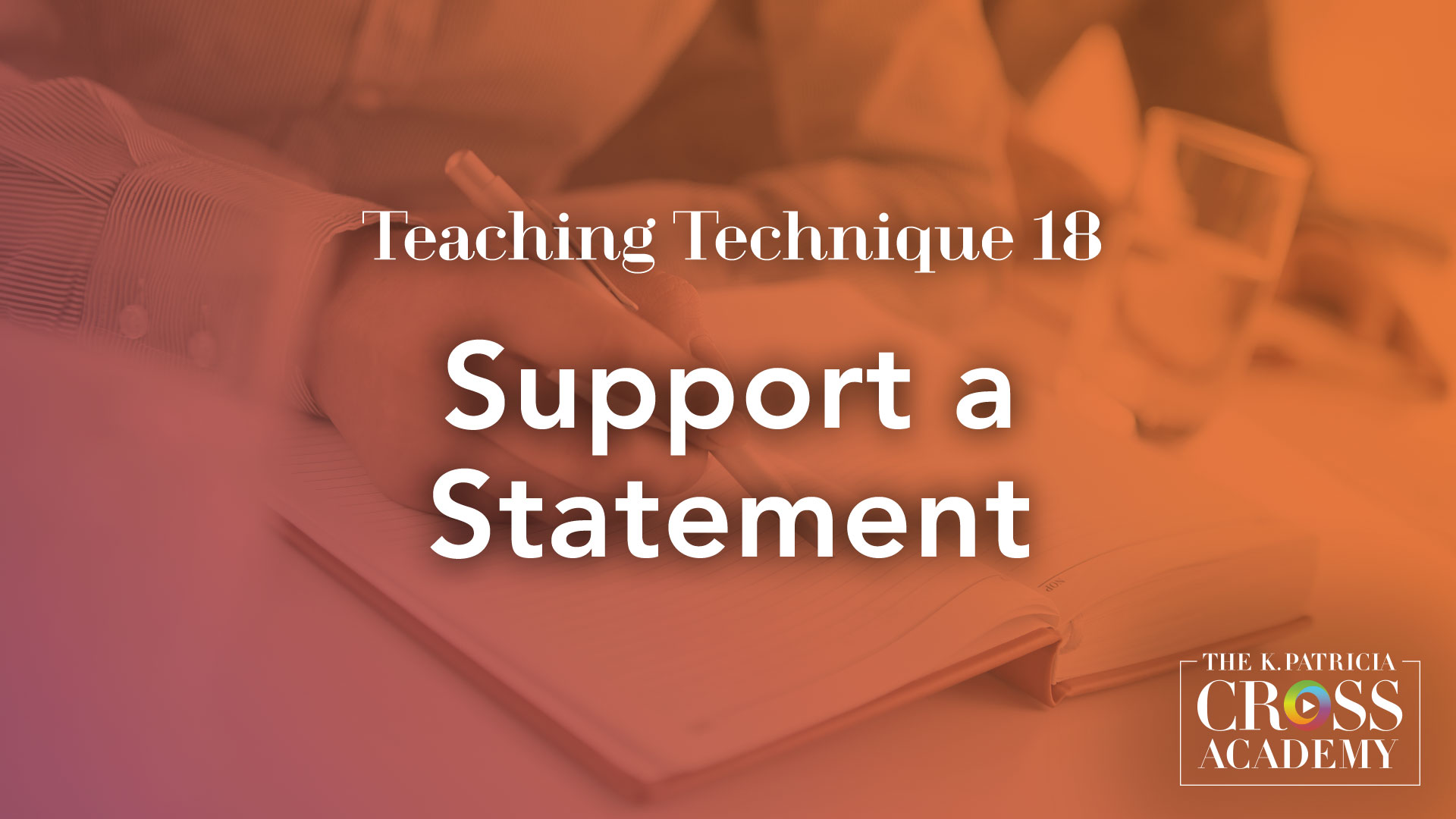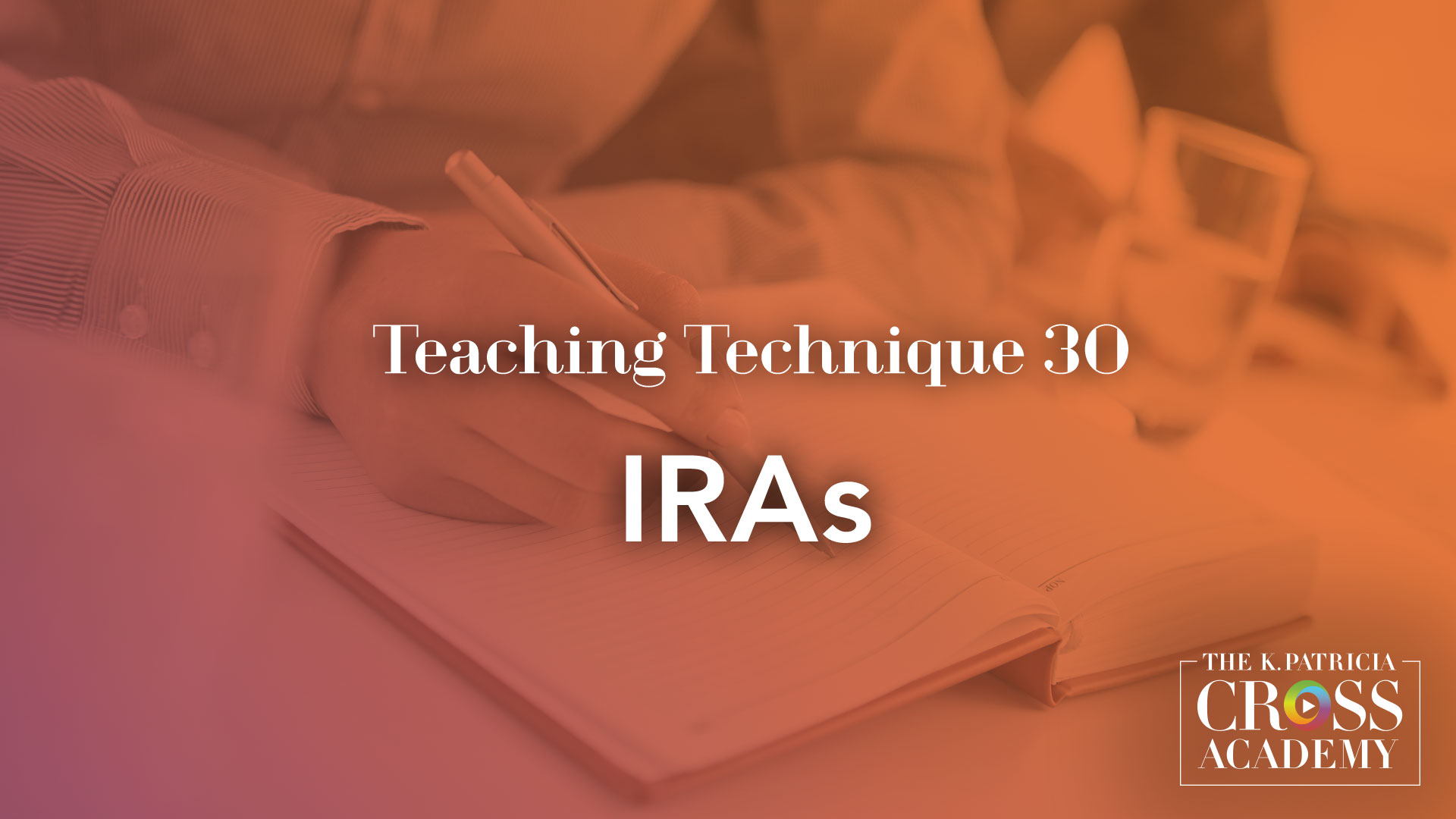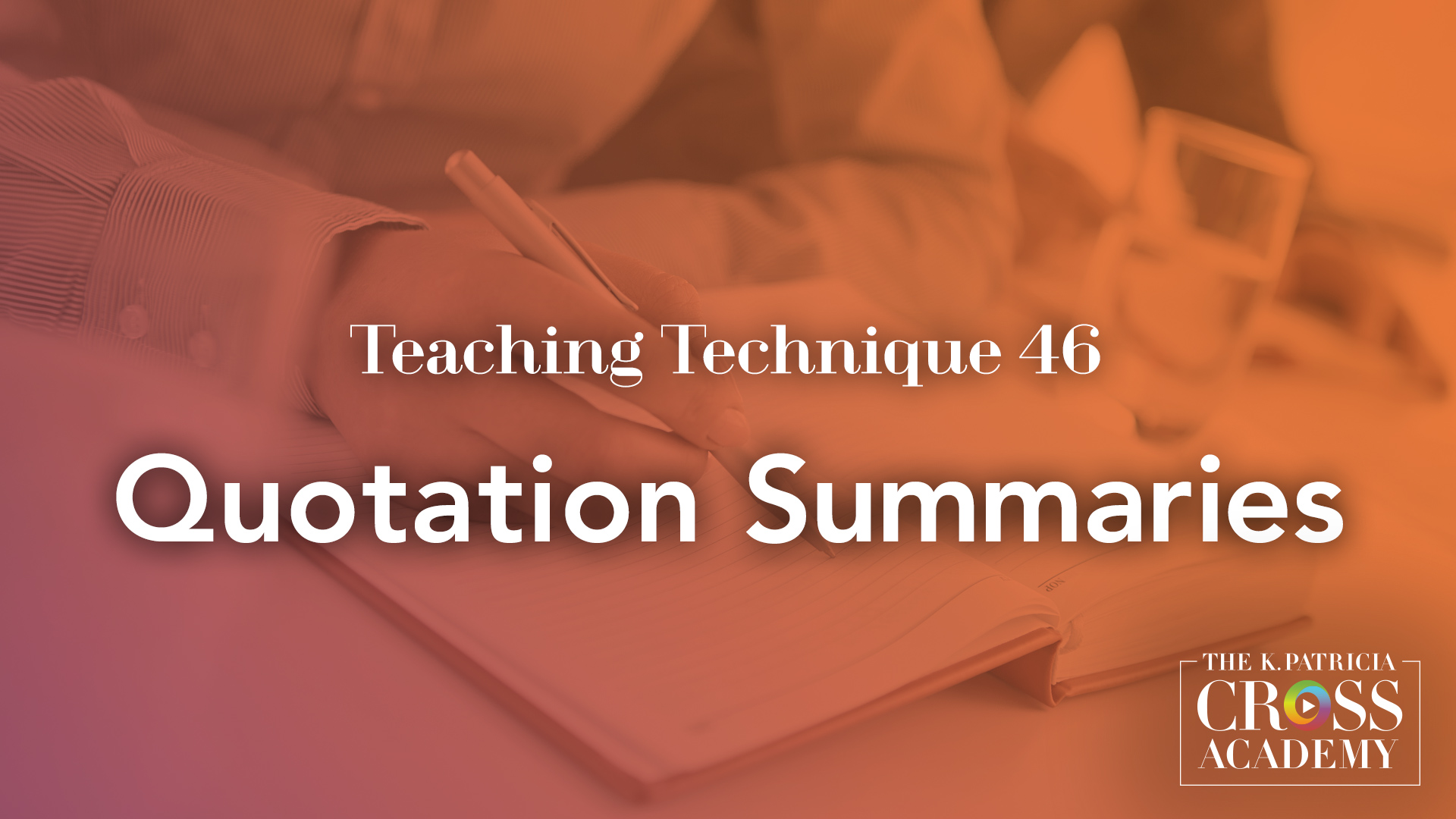
Designing effective online discussion boards can be a challenge. While some discussion boards can be fruitful grounds for conversation, others fall flat and feel forced and stale. The design of the board is critical to ensuring a successful online conversation. During the design process, we encourage you to consider the following questions.
1. What learning goal do you want students to achieve by participating in the discussion?
One of the challenges with teaching online is that often the technology prompts the pedagogy instead of vice versa. The very existence of a discussion board in your LMS seems to suggest that you create an online discussion. But having an online discussion for discussion’s sake can be a terrible waste of both students’ and your time. There should be some clear reason for using the board, and we suggest starting the design process with that goal in mind.
The first step in designing an effective discussion board is determining what students should learn during the online conversation and how that relates to overall course goals and objectives. Informing the students of the discussion’s learning goals and explaining how the goals relate to the course will encourage them to participate and keep track of, or at least acknowledge, their learning development. Following are some example goals that in turn drive the discussion prompt.
Example Discussion Learning Goals:
Participating in the discussion will enable students to:
- Identify the key ideas from a reading assignment
- Apply the information from a reading assignment or video lecture in a new context
- Reflect on a reading
- Solve a problem
- Compare experiences
- Review key content to prepare for an upcoming quiz or test
2. Will you evaluate the conversation?
As you identify your leaning goals for the discussion, it is also important to consider whether and how to evaluate students’ responses. If you choose to assess the conversation, you will likely want to determine how it contributed to meeting the goal of improved student learning. You will also want to determine the relationship between the discussion board and the course grade, and how the conversations may help students prepare for subsequent graded course tasks and tests.
Advice on How to Evaluate Online Discussion Boards:
- Establish criteria for assessing the posts and share that with students. You might use a simple check or minus system or use something more comprehensive like a discussion rubric.
- Give students feedback on their posts; for instance, point out successful ones in person or online.
- Gather student opinions; for instance, poll students to determine how they think the discussion is contributing to their learning.
3. How will the conversation begin?
How the discussion develops is largely determined by the prompt. The prompt is not only a hook but it should specify the task, identify your expectations, and clarify the student’s role in the discussion.
Tips for Writing a Good Discussion Prompt:
It is generally most useful to craft open-ended prompts. Open-ended inquiries permit expression, a variety of responses or solutions, and the investigation of the unknowable. Closed questions, on the other hand, restrict students’ ability to express themselves, frequently require them to reiterate facts from textbooks, and force them to consider correct and incorrect responses. Remember, however, that you are writing a discussion prompt, not an essay prompt. Think of discussion prompts you might use in a face-to-face or synchronous class setting as a start. Following are some example prompts.
Example Discussion Board Prompts:
Question Type: Exploratory
Purpose: Probe facts and basic knowledge:
Example: What research evidence supports…?
Question Type: Challenge
Purpose: Examine assumptions, conclusions, and interpretations:
Example: How else might we account for ___?
Question Type: Relational
Purpose: Ask for comparison of themes, ideas, or issues:
Example: How does ________ compare to ___________?
Question Type: Diagnostic
Purpose: Probe motives or causes:
Example: Why did _________?
Question Type: Action questions
Purpose: Call for a conclusion or action:
Example: “In response to ________, what should ________ do?
Question Type: Cause and effect
Purpose: Ask for causal relationships between ideas, actions, or events:
Example: If__________ occurred, what would happen?
Question Type: Extension
Purpose: Expand the discussion:
Example: What are additional ways that________?
Question Type: Hypothetical
Purpose: Pose a change in the facts or issues:
Example: Suppose__________had been the case, would the outcome have been the same?
Question Type: Priority
Purpose: Seek to identify the most important issue:
Example: From all that we have discussed, what is the most important _____________?
Question Type: Summary
Purpose: Elicit syntheses:
Example: What themes or lessons have emerged from ______________?
Question Type: Problem
Purpose: Challenge students to find solutions to real or hypothetical situations:
Example: What if? (To be motivating, students should be able to make some progress on finding a solution, and there should be more than one solution).
Question Type: Interpretation
Purpose: Help students to uncover the underlying meaning of things:
Example: From whose viewpoint or perspective are we seeing, hearing, reading? What does this mean? or What may have been intended by?
Question Type: Application
Purpose: Probe for relationships and ask students to connect theory to practice:
Example: How does this apply to that? or knowing this, how would you…
Question Type: Evaluative
Purpose: Require students to assess and make judgments:
Example: Which of these are better? Why does it matter? and So what?
Question Type: Critical
Purpose: Require students to examine the validity of statements, arguments, and conclusions and to analyze their thinking and challenge their own assumptions:
Example: How do we know? and What’s the evidence and how reliable is the evidence?
Source: Davis, 2009, pp. 364-365; McKeachie, 1999, pp 51-52 taken from Barkley, Major, & Cross (2014, p. 41)
4. How will you facilitate the discussion online?
Sometimes it is hard to know what you, as the instructor, should do in the discussion board. You don’t want to be overly involved to the point that you stifle student interaction. However, your presence is essential; it signals the importance of the conversation and aids in maintaining students’ attention and understanding of the discussion’s goals. To establish your presence, consider reacting to specific posts or the discussion’s primary themes from time to time. Following is some advice for facilitating online discussion.
Tips for Online Discussion Facilitation:
- Encourage student ideas and the process of investigation by using probing questions that steer the conversation in useful directions rather than posting authoritative remarks.
- Ask students to draw from their diverse backgrounds, and be explicit that you are promoting varied viewpoints since investigating other points of view fosters analysis, knowledge, and insight.
- Connect student insights and recall their prior contributions, pointing out how they relate to and enrich the current discussion.
- Encourage students to respond to and expand upon others’ comments by asking them to extend or clarify their points, as well as to contribute fresh insights or points of view.
- Link concepts discussed online to other aspects of the course, such as referencing questions or comments posted online during face-to-face or synchronous class sessions.
- Avoid always providing the “correct” response because doing so can stifle student discussion and inquiry.
Example Commentary on Students’ Posts:
Having a few responses in your back pocket that you can use as needed can help you facilitate discussions both efficiently and effectively. Consider the following from our book Interactive Lecturing: A Handbook for College Faculty:
Congratulate the student for the response:
- I like the point you made about X!
- Nice connection to the reading!
- Very thorough!
Vague or Incomplete Answer
Probe for more information by using questions such as the following:
- Could you give me an example of what you mean?
- Could you elaborate on that point?
- Could you explain how you got to that answer?
- That’s good so far. Can you finish the last part?
- OK, but there’s more to the answer than that.
These questions also work well for correct answers.
Partially Correct Answer
Highlight the part that is correct, and clarify where the answer is wrong. Consider the following sample responses:
- You are correct about X, and that’s great; but you’re wrong about Y. We need to correct Y so we have a fully accurate answer, and here’s how we can do that.
- I’m with you on X, but you lost me on Y. Let’s figure this out.
- Right, except you forgot X. So, when we consider X, we get a fully correct answer.
Wrong Answer
State that it’s wrong and offer a correction. Consider the following sample answers:
- Thanks for giving it a try. That’s a really common misconception/mistake. Let’s consider why that is…
- I’m glad you made that mistake. Many students make the same one. And here’s the reason for that…
- Actually, I think you forgot to consider a few facts that might change your answer. What about X, Y, and Z? What do you think now?
- OK, that’s an example. I asked for the definition. Can you provide that?
- Oh, that’s very close, but it’s not quite right. Who can tell me the correct name?
- That would be correct if X were true, but this situation is different because of Y.
- I see why you might think that, because these two concepts are easy to confuse. However, we’re talking about X specifically, and not Y.
- No, but thank you for trying.
Conclusion
Hosting an effective online discussion is a difficult task, but careful planning allows you the best chance of success. Consider some of the K. Patricia Cross Discussion techniques to provide further structure to your discussion. Following are some that may provide you with useful frameworks for designing your online discussion:
In the 3-2-1 technique, students write about 3 things they learned in the lecture, 2 things they found particularly interesting from the lecture, and 1 question they still have about the lecture content.
Fact or Opinion encourages students to critically evaluate information by questioning what they read.
The instructor provides students with a provocative statement and prompts them to locate details, examples, or data in their lecture notes to support the statement.
In Variations, students create an altered version of the original, such as rewriting the ending of a story or imagining the consequences of a changed event in history.
When using IRA’s, students complete a written response to a reading assignment that includes three components: 1) Insights, 2) Resources, and 3) Application.
In Letters, students assume the identity of an important person in your discipline and write a letter explaining their thoughts on an issue, theory, or controversy to another famous person who holds a different perspective.
In Quotation Summaries, students comment on a series of quotes from their assigned reading using a structured process: paraphrase, interpret, comment, and cite.
Reference:
Barkley, E. F., Major, C. H. & Cross, K. P. (2014; 2005). Collaborative learning techniques: A
resource for college faculty (2nd ed). Jossey-Bass.
Barkley, E. F., & Major, C. H. (2018). Interactive lecturing: A handbook for college faculty. Jossey Bass/Wiley.
Note:
For general advice about using discussion boards, visit our previous post: Making Good use of Online Discussion Boards.
Suggested Citation
Barkley, E. F., & Major, C. H. (n.d.). Answers to key questions on designing effective online discussions. CrossCurrents. https://kpcrossacademy.org/answers-to-key-questions-on-designing-effective-online-discussions/

Engaged Teaching
A Handbook for College Faculty
Available now, Engaged Teaching: A Handbook for College Faculty provides college faculty with a dynamic model of what it means to be an engaged teacher and offers practical strategies and techniques for putting the model into practice.















